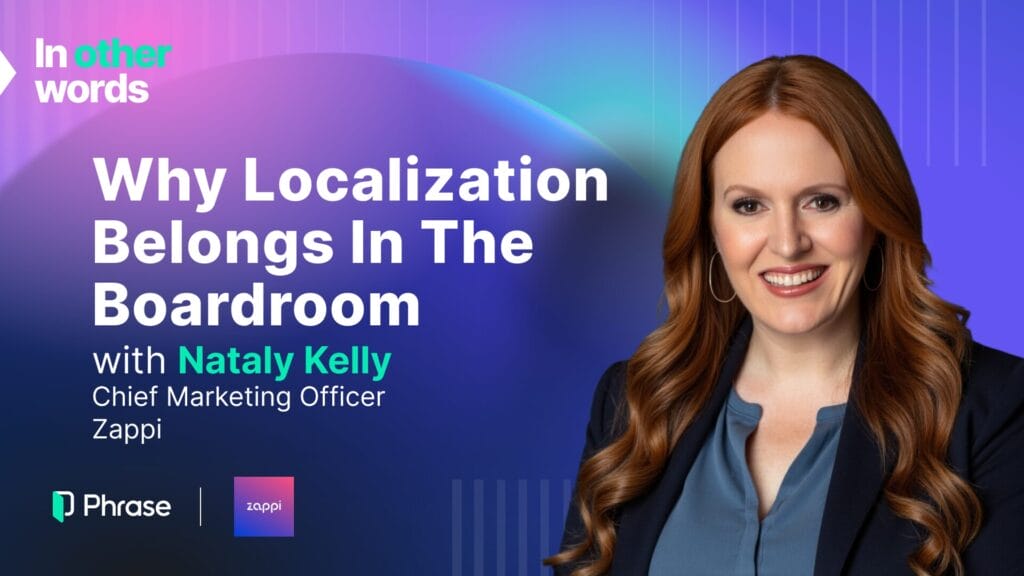If you do business internationally, you’ll be only too aware of the pitfalls of getting content wrong.
Bad translation is an embarrassment even for established brands – for challengers and newcomers it can be a disaster. But global success takes more than just accurately translated content. A streamlined localization workflow, supported by regional expertise, is essential for growth and success in new markets.
It’s hard to overstate the importance of accurate, expert localization.
We’ve all seen the translation horror stories, where factors like a lack of quality assurance or cultural insensitivity have undermined key product launches.
Mis-steps like Honda’s Fitta fubar leave brands scrabbling to limit the damage: rebranding, rewriting, and burning through limited budgets to fix mistakes that shouldn’t have happened in the first place.
Translation failures can do more than scupper new products.
Reveal that you don’t understand the language, politics or culture of a region, and consumers might begin to wonder who you are and what you’re doing there.
It’s hard to build customer trust or loyalty if your content doesn’t speak to its audience, whether that’s down to translation errors, or because what plays well in one territory sinks without trace in another.
Owning your brand
Recognisable branding is particularly important to global success, but that doesn’t mean that brand names, tag lines or even logos work across the world. HSBC’s ‘Assume nothing’ campaign was translated as ‘do nothing’ for many international markets, with predictably underwhelming results.
In these days of content marketing, the success of branding depends on more than just having polished top-level assets.
All content needs to convey the brand personality, and balance the brand tone of voice against the sensitivities of the region. Mis-translations or cultural errors can imply a lack of respect or quality, and they can be hard to recover from.
“The idea of owning our intellectual property and brand voice in all of these languages was something… I was truly passionate about.”

Discover how Phrase helped Snyk boost its global presence with a tailored localization strategy.
Getting content right, across all markets, helps position a brand as truly global. Speaking the language – and steering clear of cultural clangers – shows that the business is invested in a region, and has the local expertise to provide the products and services that its customers need.
With the right localization resources, a brand can nail tone-of-voice across territories, strengthening its identity and value further.
Regional awareness opens up further opportunities for success. Knowing the local calendar, for example, lets marketers tap into key events such as Black Friday where they’re significant, and avoid wasting energy on them where they’re not.
Understanding regional holidays and seasonal buying patterns also lets businesses plan a strategy to maximise trade opportunities, and work through traditional slack points.
Staying relevant
Organisations that speak to a worldwide population benefit from more than just simple economies of scale.
Understanding the cultural sensitivities of each territory helps brands remain relevant, engaging in the conversations and concerns that most resonate with that audience.
More than that, local knowledge helps businesses strike the right note when translating global brand qualities into pitch-perfect local behaviour. This might mean for example that an edgy, playful brand that works in the UK needs toning down for more conservative markets.
But great localization, coupled with an in-depth understanding of local demographics and sensibilities, can also allow businesses to advocate for their founding ideals, and even help to be a force for change.
In 2023, Pizza Hut’s Beverly D’Cruz explained how increasing numbers of women were now joining the chain’s Saudi Arabian workforce, as it thrived in the rapidly changing kingdom. Writing in Campaign Middle East, D’Cruz said that the path to success lay in celebrating and immersing yourself in local values.
“While respecting the traditional cultural heritage, you also tap into opportunities and challenges that come with modernisation.”
And great localization isn’t just one-way traffic. It’s well-established that a more diverse workforce fosters greater creativity and innovation, along with more strategic thinking. Having a real presence across the world lets businesses benefit from a far wider range of experience, backgrounds and skills.
Smart brands jump on this, driving diversity, equity and inclusion by recognising and nurturing talent wherever it exists in the organisation.
Building in efficiency
Localization isn’t just the end result. It’s a process, the quality of which has a big impact on the outcome.
While many businesses start with ad-hoc, spreadsheet-dependent processes, these soon become unwieldy, and are prone to manual errors.
Businesses with regional or global ambitions need to invest in a strong localization strategy, and a robust and dependable workflow.
Implementing a translation management system (TMS) transforms a business’ ability to deliver optimized and consistent localization across its operations, with numerous benefits.
Efficiency is increased through streamlined and simplified workflows – while the machine translation (MT) and AI features built into Phrase can reduce costs by as much as 55%.
A TMS guides translators, helping them stick to predefined terminology for their region, with every translation stored so that the same work doesn’t get repeated.
This last feature offers extra benefits – translations are available for re-use, meaning that commonly used terms and phrases are consistent across localized material. This is a key benefit for brand consistency, ensuring that translators’ expertise in translating the brand tone of voice is leveraged across all content.
“As the business was growing, we had more localization requests from many different teams, and it became unsustainable to work without a proper Translation Management System.”

Read how Phrase accelerated Deliveroo’s global expansion.
The increase in efficiency and quality makes a TMS indispensable for global success stories.
A streamlined and manageable localization workflow ensures faster turnaround on work, lowering the time to market for campaigns, products and services. That can translate to a competitive edge, and helps to free up investment that can consolidate the brand’s position in a new territory.
Slick localization can help reduce costs in other areas, too.
An automated workflow, enhanced with plugins for content and design platforms like Figma, ensures that translators get involved earlier in the design process, reducing friction, and helping spot potential regional issues before they become costly to fix.
Properly and consistently translated UX content means apps and websites are easier for customers to navigate, causing less confusion, and lowering support costs.
To come back to where we started, you can’t be competitive in a territory without showing you understand it.
A comprehensive localization strategy is just the starting point for a global business. Having the platform and talent to deliver your objectives is fundamental, allowing your brand to flex its messaging and IP to maximise success in every market.

Unlock global business with the Phrase Localization Platform
Expand into new markets with all the tools you need in one technology suite for high-quality, fast, and scalable localization.





